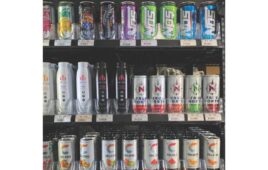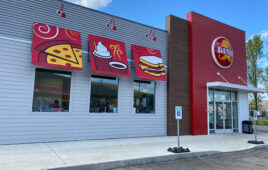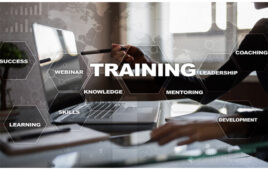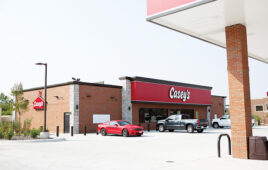 It’s football season, so let’s approach in-store merchandising, layout and adjacencies in the context of football.
It’s football season, so let’s approach in-store merchandising, layout and adjacencies in the context of football.
Guests entering your store most often have a primary need (goal) in mind when they arrive. It’s likely this goal falls into one of three categories — hungry, thirsty or comfort. Think of them finishing the quest to satisfy these needs as the “touchdown” and their journey intercepting prepared food or beverage purchases as a two-minute drill. Let’s name our guest Drew.
Drew enters the playing field, and after moving a few paces into the store looks up to determine the targeted objective, which is likely to be a destination and primary purchase occasion tied to either foodservice or the cold vault. Note that the moment Drew looks up, she is already well past merchandising space, which should be reserved for low-frequency and sought-out purchases (example: oil/automotive).
Think of the middle third of the store as the red zone and the back third of the store as the end zone.
Destination-driven departments, consisting of high-frequency categories to satisfy hunger, thirst and/or comfort should be strategically placed along the perimeter walls in or close to the end zone. If you have a signature offering, consider placing this under the goal posts (center of the end zone).
Therefore, as Drew breaks from the landing zone inside of the front door to the desired objective, it is incumbent on us, as merchants, to take offensive measures of our own, strategically merchandising end caps and promotional zones on the way through the field.
Merchandising along the path to the end zone is best reserved for adjacent products or those secondary to the primary purchase occasion and/or related impulse items. Examples of this are: single servings of chips or a 12-pack promotion on the way to the beer cooler, healthy snacks and upscale drinks on the way to the foodservice destination, or bakery and healthy snacks on the way to the coffee and hot dispensed drinks.
Once Drew reaches the goal line, satisfying the primary need for the store visit, we need to prepare for the second half — the journey back through the store to the checkout.
The Second Half
If the primary reason for the store visit was to satisfy thirst out of the walk-in cooler, we should be thinking of which way to hinge the doors. Swinging the doors properly can drive Drew further into the store and set up secondary purchase occasions. This is accomplished by carefully planning category adjacencies in the store layout process. A good sightline to the foodservice offering is also desirable in this example, creating the opportunity to change the needs dynamic from thirsty to hungry.
If the primary reason for the visit was foodservice, we should be planning for adjacent dispensed drink purchases (hot and cold) and/or related and secondary food purchases such as healthy snacks, salads, chips, dessert and selective packaged beverages as Drew steps away from the counter with the mission accomplished.
With the touchdown (primary purchase) and the extra point (secondary/adjacent purchase) in-hand, we should have the return trip to the opposite goal line (cash wrap — or just walkout/checkout) carefully curated to strive for a tertiary purchase occasion. This merchandising can be an assortment of well thought-out and placed adjacent and impulse items.
That leaves us with the checkout counter. This area serves both customers shopping in-store and those only paying for fuel, lottery and/or tobacco products merchandised at the counter. In either event, this is a great place to create an impulse purchase. Avoid confusion/clutter here and feature a taste of your signature offer or high ring/margin impulse items on or near the counter. Make it easy to score for a win-win.
Finally, remember merchandising, like football, is a team effort — having the merchandising and operations teams huddle up together to plan category layout and adjacencies can be a powerful tool.
 Tom Ross managed store design and layout for both Mobil and ExxonMobil “On the Run” convenience stores. He is currently the principal of Ross Co., a consultancy for convenience, foodservice and fuels marketers. He is also a lifelong Green Bay Packers fan — Go Pack Go! He can be reached at [email protected].
Tom Ross managed store design and layout for both Mobil and ExxonMobil “On the Run” convenience stores. He is currently the principal of Ross Co., a consultancy for convenience, foodservice and fuels marketers. He is also a lifelong Green Bay Packers fan — Go Pack Go! He can be reached at [email protected].




